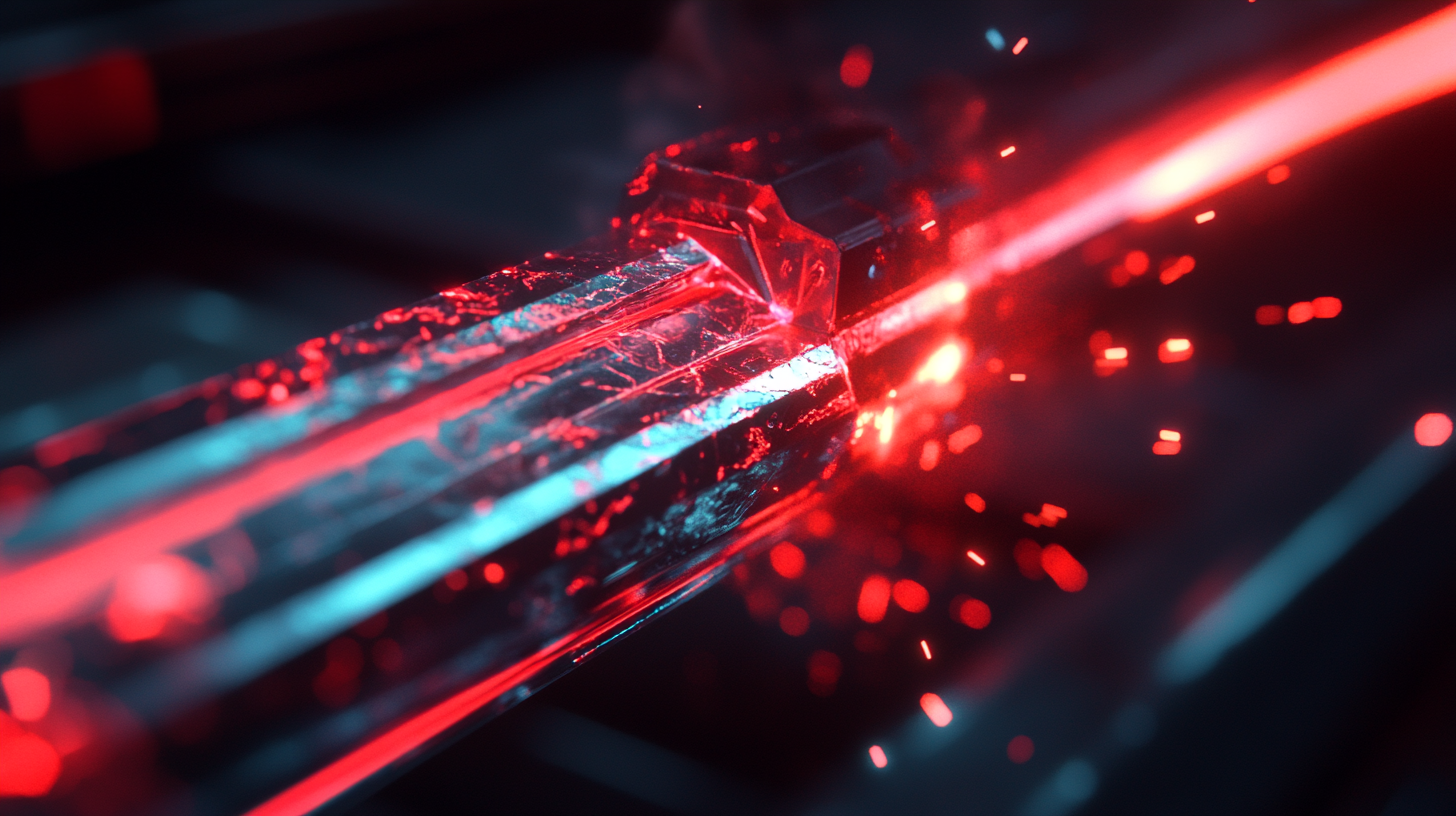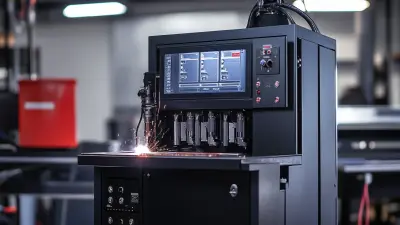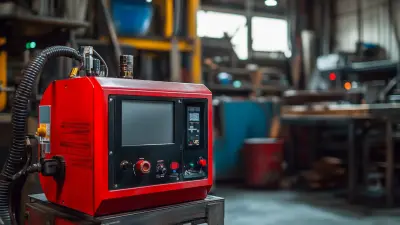Looking ahead to 2025, it’s clear that the welding industry is gearing up for some big changes, thanks to advances in technology and shifting market needs. A recent report from the American Welding Society says that the global welding market could hit around $34 billion by 2025! That's driven by growing demand in different sectors like construction, automotive, and manufacturing. Stick welding, which a lot of folks still use because it’s so versatile and effective, really requires welders to keep fine-tuning their skills to stay ahead of the game.
Here at TAIZHOU YIKE MACHINERY CO., LTD, nestled in Xiayangzhang, Daxi Town, Wenling City, Zhejiang, China, we’re all about making top-notch inverter welding machines that boost performance and reliability. One pesky challenge welders often face is that annoying “Stick Welder Sticking” problem, which can really slow things down and mess with the quality of the welds. By diving into the latest trends and techniques, we hope to share some helpful tips so that welders can tackle this issue head-on. This can lead to more efficient and effective welding practices as we move forward into the future!

Looking ahead to 2025, it’s pretty clear that the world of stick welding is gearing up for some big changes, all thanks to some exciting new technologies on the horizon. One of the big players in this shift is the rise of welding machines that come with artificial intelligence (AI). These clever systems are able to check out the welding conditions in real-time and automatically adjust settings to match what’s happening around them, whether it's the material being used or the environment. This cool innovation not only boosts efficiency but also cuts down on defects, which is a win for weld quality. Another trend worth noting is how augmented reality (AR) is stepping into the training and working world of welders. Imagine wearing AR glasses that project important info right into your line of sight! This tech can really change the game by providing visual aids that help welders learn better and get live feedback while they're working. It’s like having a personal coach right there with you. With AR, both newbies and seasoned pros can really sharpen their skills and avoid those pricey mistakes. Then there's the wave of new materials coming into play, like high-strength alloys and fancy composites. Welders are going to have to up their game to tackle these materials, which means brushing up on what makes them tick when it comes to welding. Staying in the loop with all the latest tech is super important, especially as new welding rods and supplies pop up to suit these materials. Keeping those skills sharp is essential to meet the ever-evolving industry standards.

You know, it's pretty clear that focusing on sustainable materials is becoming super important in the stick welding industry as we gear up for the trends we'll see by 2025. The global welding consumables market? It's projected to hit a whopping USD 34.9 billion by then, up from just USD 20.3 billion in 2020. So, you can bet that coming up with new materials is crucial if we want to keep up with all this growth. One of the big trends we're seeing is the shift towards using sustainable materials. They not only improve the welding process but also help cut down on the environmental impact—win-win, right?
Now, let's talk about the steel industry, which is a major player when it comes to welding. They're really diving into the idea of a circular economy. Basically, this means they're trying to waste less and make the most out of resources—who wouldn’t want that? It’s a smart move that blends environmental responsibility with the potential for economic growth. By using recycled materials in welding consumables, companies can reduce their carbon footprint and build a supply chain that's more resilient. This is definitely in line with the increasing call for eco-friendly practices in manufacturing.
And we can’t forget about materials like helium in this green transition. It's actually super important for a bunch of applications, especially when it comes to advanced welding techniques for renewable energy projects, such as wind turbines and fusion reactors. As more industries hop on the green tech train, the role of welding in creating sustainable materials is going to be key. This shift will not only benefit the environment but will also drive economic progress. Definitely an exciting time ahead!

You know, the welding industry is really always on the move! There’s this constant push for better productivity, efficiency, and quality. Take stick welding, for instance—also known as shielded metal arc welding (or SMAW if you’re into acronyms). Here, being precise and delivering top-notch quality is everything. Lately, we've been seeing some cool new techniques popping up, like vibration-assisted welding (VAW). It’s kind of shaking up the usual ways we do things! Research has shown that just a little low-frequency vibration can make a big difference in the mechanical properties and microstructure of welds, leading to joints that are stronger and more reliable. When we integrate VAW into our processes, it really amps up the stability and quality of welds, and makes the whole stick welding game better.
Oh, and let’s not forget about how inverter welding gear is seriously changing the industry landscape. The global market for inverter welding equipment is expected to skyrocket—like hitting USD 4.95 billion by 2024 and keeping a solid growth pace until 2030. That just shows how crucial it’s become to focus on things like arc stability and weld integrity. It’s more important than ever for welders to embrace these modern tools and techniques to really sharpen their skills.
And if we're talking about staying ahead, you can’t ignore automation and smart tech! They’re gonna be key to staying competitive in an increasingly automated shipbuilding world, where being efficient is super important. Just thinking about it, techniques like deep learning for detecting arc bubble edges during underwater wet welding are helping set a new standard for quality control and precision—especially in tricky situations. By tapping into these tech advancements, welders aren’t just improving what they do; they’re also adapting to the fast-changing industry landscape, ensuring their skills stay relevant through all the shifts.

Looking ahead to 2025, it’s pretty clear that automation is going to shake things up in the world of stick welding. You know, with all this buzz around robotic systems and fancy welding machines, they’re really stepping up their game by taking over those repetitive tasks. This gives skilled welders a chance to dive into the more complex and nuanced parts of their work – that’s where the magic happens! Not only does this boost productivity, but it also means we’ll see better consistency and less chance of human error, which ultimately leads to some top-notch welds.
And let’s not forget about the impact of artificial intelligence and machine learning! These automated stick welding systems are getting better at adapting to whatever challenges come their way. They can actually analyze things like material thickness, type, and even the environment while they’re working, adjusting the welding parameters on the fly. How cool is that? This level of precision isn’t just a game-changer; it really helps professionals nail those optimal results, even when the going gets tough. But with all this tech on the rise, welders are going to need to pick up some new skills to keep up with these advanced systems and maintain them.
Plus, all this automation has some real implications for how we train and educate the workforce. As the industry evolves, training programs will have to shift gears and teach the next generation of welders how to work alongside these automated setups. It’s going to take a mix of the classic welding techniques and the latest tech know-how, so they’re ready for a future where automation is just part of the fabric of the welding world. Embracing these trends isn’t just about being efficient; it’s also about making sure welders can really thrive in this increasingly automated landscape.
Hey there! So, it’s pretty clear that with the demand for skilled welders skyrocketing, investing in training and upskilling is more important than ever for anyone looking to step into stick welding. Looking ahead to 2025, we’re going to see some pretty significant changes in the welding scene, all thanks to tech advancements and shifts in industry standards. If today’s welders want to stay relevant, they really need to embrace lifelong learning. This could mean signing up for formal training programs or diving into hands-on workshops that focus on the latest stick welding techniques and equipment.
But wait, there’s more! Upskilling opens up some cool paths for specialization too. Think about it: mastering things like pipe welding or structural fabrication can really set you apart. With automation making its way into welding tasks, getting a grip on how to blend traditional stick welding with new technology is going to be a game changer. There are tons of resources out there—online courses, certifications, and mentorship programs—that can help welders hone their skills. As projects in this industry become more complex, the welders who put in the effort to keep learning will be way better prepared to face all kinds of challenges and truly add value to their teams.
Plus, this whole commitment to education doesn’t just make you a better welder; it also boosts safety and efficiency on the job. As the welding environment gets more high-tech, those welders who actively seek to sharpen their techniques will definitely find more job openings and chances to move up in their careers. By tapping into the educational resources out there, future stick welders can gear up to meet the evolving demands of the industry and really take their craft to the next level!
As stick welding technology continues to evolve, staying abreast of trends is crucial for maintaining a competitive edge. One of the key considerations for welders and fabricators in 2025 will be budgeting for essential equipment upgrades. According to a report by Grand View Research, the global welding equipment market size is expected to reach $28.3 billion by 2025, growing at a CAGR of 5.2%. This indicates a rising emphasis on advanced welding technologies that facilitate higher efficiency and output quality.
When planning for equipment upgrades, it’s essential to develop a comprehensive budget that encompasses both immediate and long-term needs. Invest in high-performance welding rods and machines that offer features such as inverter technology. Studies from the American Welding Society show that modern inverter-based stick welding machines can reduce energy consumption by up to 30% while improving arc stability, thus justifying their higher initial costs. Allocating funds for training on these advanced machines is equally important, as proper technique can enhance the benefits gained from upgraded equipment.
Furthermore, consider exploring financing options tailored for welding professionals. Equipment leasing has gained popularity, allowing businesses to upgrade without a significant upfront investment. According to Equipment Leasing and Finance Association, 80% of businesses utilize leasing for equipment purchases, which can preserve cash flow and enable timely upgrades. Aligning your financial planning with industry trends will not only optimize your capabilities but also position your business for future growth in the dynamic stick welding landscape.
As we head toward 2025, the welding industry is really going through some big changes, especially when it comes to health and safety innovations that put workers’ well-being front and center. Lately, these safety improvements have become super important for boosting productivity in welding operations. A lot of attention is being given to new protective gear that's built to handle tough working conditions. Not only do these advancements make welders safer physically, but they also ramp up comfort and performance while they're on the job.
And let’s not forget about the cutting-edge tech that’s being rolled out in welding equipment! For example, there’s this new rail welding machine in the U.S. that’s set to double the lifespan of welds. That’s a huge deal for infrastructure safety. This kind of innovation helps reduce risks tied to rail operations, which means workers face fewer hazardous situations, all while promoting a more sustainable approach to welding practices.
As we dive into these emerging trends, one thing becomes pretty clear: the welding industry is really focused on balancing health and safety with productivity. The ongoing use of digital technologies like IoT and robotics is really helping with these goals, leading to more efficient and safer welding processes. In this changing landscape, it's not just about having better tools for welders; there's a whole culture moving towards safety being the top priority, paving the way for a work environment that’s not only more efficient but also a lot safer in the years ahead.
The focus on sustainable materials in the stick welding industry is crucial as it aims to enhance the welding process while reducing environmental impact, especially as the global welding consumables market continues to grow.
The steel industry is exploring a circular economy approach, which reduces waste and optimizes resource use by integrating recycled materials into weld consumables, decreasing carbon footprints, and creating resilient supply chains.
Helium is important for advanced welding techniques in renewable energy projects, such as wind turbines and fusion reactors, thus supporting the green transition in various industries.
Training and upskilling are essential for aspiring stick welders to stay competitive in an evolving industry shaped by technological advancements and changing standards.
Aspiring stick welders should pursue formal training programs, hands-on workshops, online courses, certifications, and mentorship opportunities to learn the latest techniques and technologies.
Upskilling allows welders to specialize in applications such as pipe welding or structural fabrication and equips them to integrate automation into traditional welding processes, leading to increased job opportunities and career advancement.
Continued education enhances individual skills, promotes safety, and improves efficiency in the workplace, enabling welders to better handle complex projects.
Welders should prioritize education and training resources to prepare for the evolving industry and elevate their skills to tackle a variety of challenges effectively.





